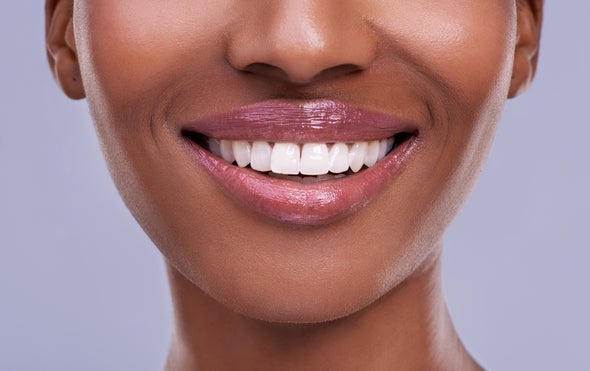Instead of Filling Cavities, Dentists May Soon Regenerate Teeth ...
https://www.scientificamerican.com/.../instead-of-filling-cavities-dentists-may-soon-re...
Instead of Filling Cavities, Dentists May Soon Regenerate Teeth
Researchers
recently discovered certain drugs, including one developed to treat
Alzheimer’s, stimulate innate self-repair mechanisms

But what if instead of drilling holes into teeth and patching them up with synthetic fillers, dentists could coax our pearly whites to regrow themselves? Recently, Paul Sharpe, a bioengineer at King’s College London, and his colleagues discovered a new way to do exactly this in mice. Last year they published a study describing their innovative techniques in Scientific Reports. And since then they have made even more progress that edges this experimental procedure closer to human clinical trials. If the treatment eventually becomes part of the dentist’s standard tool kit, scientists say it would easily be one of the field’s most important advances in 50 years.
Our teeth get damaged all the time. Most of the injuries they endure are due to everyday wear and tear as well as the activity of microbes in the mouth. These organisms coat the surface of each tooth and feed on meal remnants. As they break down particles of food, some of these microbes produce and secrete acids as a by-product. And that acidity degrades enamel—the tooth’s hard outer layer.
Sharpe suspected he could dramatically boost teeth’s natural healing ability by mobilizing stem cells in the dental pulp. Earlier research had demonstrated the Wnt signaling pathway—a particular cascade of molecules involved in cell-to-cell communication—is essential for tissue repair and stem cell development in many parts of the body such as the skin, intestines and brain. Sharpe wondered: Could this signaling pathway also be important for self-repair processes in teeth? If so, maybe exposing damaged teeth to drugs that stimulate Wnt signaling would similarly encourage the activity of stem cells in the dental pulp—giving teeth the kind of regenerative superpowers usually seen only in plants, salamanders and starfish.
To test this idea, Sharpe and his fellow researchers drilled holes into the molars of mice, mimicking cavities. They then soaked tiny collagen sponges (which are made from the same protein found in dentin) in various drugs known to stimulate Wnt signaling, including tideglusib, a compound that has been investigated in clinical trials for its potential to treat Alzheimer's and other neurological disorders. The scientists then placed these drug-soaked sponges in the drilled mouse molars, sealed them up and left them for four to six weeks. The teeth treated with these drugs produced significantly more dentin than ones untreated or stuffed with an unsoaked sponge or typical dental fillers. In most cases the technique restored the rodents’ pearly whites to their former intact state. “It was essentially a complete repair,” Sharpe says. “You can barely see the joint where the old and new dentin meet. This could eventually be the first routine pharmaceutical treatment in dentistry.”
David Mooney, a professor or bioengineering at Harvard University who has also investigated new ways to heal teeth but was not involved in the study, says he is “very impressed” by these findings. “This is not just scientifically important, but has significant practical advantages," he says. Adam Celiz, an assistant professor of bioengineering at Imperial College London who was also not involved in the recent research, says this is an important advance in the emerging field of regenerative dentistry. “The materials dentists use could soon be revolutionized,” he says.
Any treatment that recruits the body's native stem cells or adds new stems cells to the body, however, poses a risk of uncontrolled tissue growth. Experimental and unregulated stem cell therapies have resulted in brain tumors, for example, as well as bones growing in eyelids. But in this case, Sharpe says, the amounts of drug used are so tiny that the risk of unwanted growth is minimal. Celiz agrees the danger is small but he says rigorous testing in lab animals and clinical trials should be done to rule out potential side effects.
New Method of Filling Front Teeth - Scientific American
https://www.scientificamerican.com/article/new-method-of-filling-front-teeth/
The enamel for the cavity is of the same material as artificial teeth, and is formed ... A represents a frame to support the working parts ; B is a shaft which is placed
How does the fluoride in toothpaste prevent ... - Scientific American
https://www.scientificamerican.com/article/how-does-the-fluoride-in/
[PDF]From Dental Enamel to Synthetic Hydroxyapatite-Based Biomaterials
ediss.sub.uni-hamburg.de/volltexte/2005/2321/pdf/E-dissertation_Shi.pdf
by J Shi - 2005 - Cited by 1 - Related articles
6.3.4 Toughening mechanisms of hydroxyapatite-metal composites. 86 .... network composites mimicking the microstructural features of dental enamel was successfully fulfilled in this ...... Cambridge University Press, Cambridge,. 37-61.Synthetic composite mimics tooth enamel - Cambridge University Press
https://www.cambridge.org/core/.../news/synthetic-composite-mimics-tooth-enamel
No comments:
Post a Comment